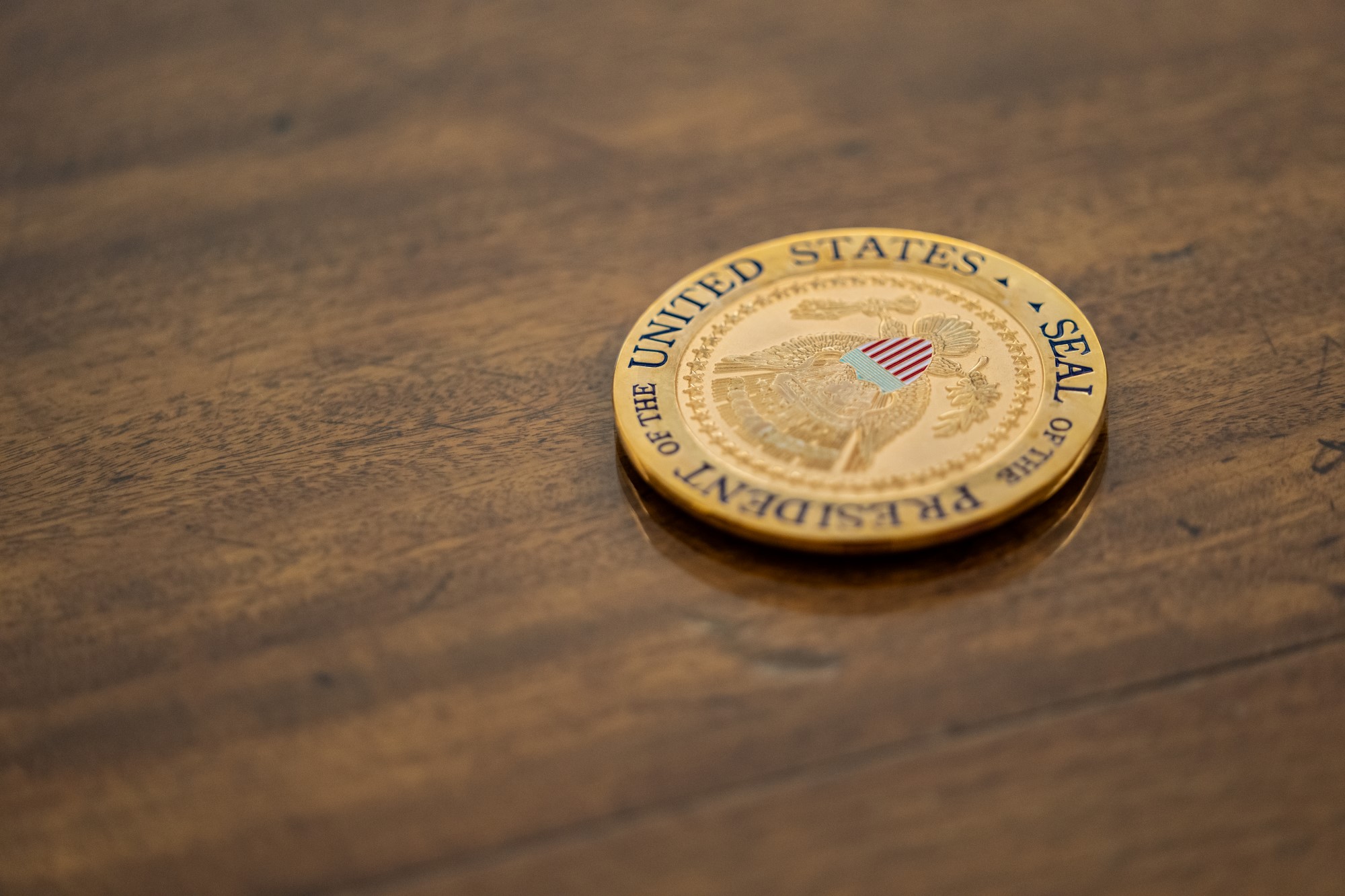Retweets, Endorsements, and Indirect Speech Acts
Over the weekend, President Trump engaged in a rare retraction, deleting a retweet of a video of pro-Trump protesters at a Florida retirement village. Midway through this video, a man in a golf cart sporting ‘Trump 2020’ and ‘America First’ placards, raises his fist and clearly shouts ‘white power’ at a group of anti-Trump protesters. The retweet stayed up for around three hours on Saturday morning, before it was taken down after uproar. In subsequent statements, the White House press secretary Kayleigh McEnany has tried to maintain both that the 45th president of the United States watched the video before retweeting, and that he nonetheless didn’t hear the slogan shouted in the middle of the video. We might find this is a little difficult to believe, given his record of sharing white supremacist slogans and iconography.
Setting to one side the question of whether the president actually watched the video before sharing it, this example opens up a more general question: when should one be held responsible for one’s retweets? Is it possible to hide behind the defense that a retweet involves someone else speaking (and in this case making a white supremacist hand gesture), or does retweeting involve repeating what someone else has said, meaning that a retweeter can be held just as responsible as the original poster?
One way to make sense of our responsibilities for sharing other peoples’ words is to deny that there is an important distinction between tweeting and retweeting. On this view, when we share other people’s words, we make them our own, meaning that we put our credibility behind them, express belief in them, and take responsibility for them.
This view faces a number of problems.
The Oxford philosopher G.E. Moore observed that it is absurd to make a claim while denying that one believes that claim. The sentence ‘I went to the park yesterday, but I don’t believe that I did’ is perfectly grammatical, but it is a very strange thing to say. Explanation of so-called Moorean sentences differ, but almost everyone agrees that uttering a Moorean sentence is a strange thing to do. By contrast, it is perfectly possible to retweet an article with the comment that you don’t believe its headline claim. Here’s an example:
I don't believe that 1.3 million Brits bought a bike during lockdown https://t.co/mro5ULOFTl
— Joshua Habgood-Coote (@impractknow) June 30, 2020
(To be clear, I don’t have any strong views about the number of bikes sold, and cycling weekly is a reputable source: this is just an example.) Relatedly, there is a whole genre of tweets in which a fact checker retweets an article or picture, along with a claim that the article is false.
Trump’s claim that #VoteByMail leads to fraud is misleading. Election experts have found it is exceedingly rare.
@CapRadioNews & @CAPolitiFact are answering questions about #VoteByMail2020. Send us your questions here: https://t.co/hEZpViEZGD https://t.co/OatkdRXMua— PolitiFactCalifornia (@CAPolitiFact) June 22, 2020
If retweeting were equivalent to tweeting, this genre of debunking tweet would involve making a claim and denying it. This wouldn’t be just absurd: it is a flat out contradiction.
Retweets that involve promises, requests, or questions similarly don’t behave like tweets. If you tweet a promise to your partner to clean your house every day in August, and I retweet it, I haven’t thereby promised to clean your flat too!
These differences suggest that we ought to draw a pretty clear distinction between tweeting and retweeting.
A natural strategy in thinking about kinds of online communication is to look for features of offline communication that have similar features. There are two offline devices of communication that are good candidates for making sense of retweets: quotation and pointing.
In a recent paper Neri Marsili explores the view that retweets function like quotation. This view take the original format of retweets — a sentence prefaced by ‘RT’ — seriously and claims that retweeting is like putting quotation marks round a sentence and saying so-and-so said: […]. This view can deal with retweeting with a comment by treating it as a quotation embedded into a longer sentence. It is perfectly reasonable for you to say “Josh said that he went to the park yesterday, but I don’t believe that he did,” or “Josh said that he went to the park yesterday, but he didn’t.”
The problem with this view comes from the diversity of retweets. Besides retweets of sentences, we also find retweets of pictures, gifs, polls, and videos. Unlike sentences, gifs and the like aren’t the kinds of things that one can put in quotation marks, so this view can’t be correct.
An alternative view, suggested by Jessica Pepp, Eliot Michaelson, and Rachel Sterken (and ultimately endorsed by Marsili) treats retweeting as akin to pointing. Pointing is an extremely common and flexible referential device associated with words like ‘this’ and ‘that’. By itself, it can function as a device for directing attention. If we were on a walk together, I might stop and point to draw your attention to an interesting bird. We can also use it to make claims about the world (“that [points] is a very ugly chair”), to answer questions (“which student cheated on the test?”), and even to make commands (“give me that [points]!”). One piece of evidence for this view is the fact that is extremely natural to use ‘this’ and ‘that’ with retweets; in fact some tweets are simply labelled with an imperious ‘THIS’.
The proposal is that retweets function like pointing, with the comments functioning like the sentence that refers to the object pointed towards. On this view, disbelieving and debunking retweets work a bit like the sentences “I don’t believe this [points]” and “this [points] is false” which are clearly reasonable sentences.
So far, we’ve got a bit clearer on how to think about what kind of communicative action retweeting is, but we haven’t yet addressed the issue of responsibility for retweeting. On the view under consideration, a plain retweet is purely referential; it’s like pointing to a bird whilst on a walk to draw others’ attention to it. Retweets with comments may clarify whether the speaker means to endorse the retweeted comment, but merely retweeting doesn’t clarify whether one has endorsed the claim.
Here we can bring in another piece of philosophical technology: indirect speech acts. Indirect speech acts involve performing one direct communicative acts as a means to performing another indirect act. For example, directly asking the question “do we have any beer in the fridge?” might involve indirectly making a request for you to get me a beer. Indirect speech acts are highly conventionalized and context-sensitive. If I’m clearly drawing up a shopping list, asking “do we have any beer in the fridge?” will probably function as a straight question (unless I have a habit of drinking a beer while writing lists).
The suggestion is that retweeting can involve two distinct speech acts: a direct referential act and an indirect act of endorsement. We might think about retweeting an article in order to endorse it as being a little bit like opening a newspaper on an interesting article and leaving it in the spot where your partner goes to have their morning coffee.
Frustratingly, this means that there is no easy answer to the question of what responsibility we bear for retweets. As we’ve just seen, indirect speech acts are highly context-dependent. There may be some internet communities where the conventions around retweeting involve strong endorsement. If I share an article about a new treatment for COVID-19 into a Facebook group for medical professionals, I might be endorsing both the headline claim of the article, and the supplementary claims it makes. By contrast, if I share an article about the performance benefits of a new Nike running shoe into a running group that habitually shares different studies, and where it is common knowledge that these studies are based on shaky science, I might merely be drawing attention to a new piece of information.
What happens when a communicative situation lacks clear norms about the significance of retweeting? Well, things get messy. One person might retweet a controversial article meaning to call attention to its argument, and be interpreted as endorsing it wholesale. Another person might share a picture of a protest meaning to endorse the cause of the protesters, and be interpreted as mocking or belittling them. In this kind of situation, context collapse is rife, and it becomes difficult to rely on shared presuppositions and conventions about communication.
In this defective speech situation, it is extremely difficult to make sense of which indirect speech acts we are performing. When we hold one another responsible for indirect speech acts associated with retweets, we are not implementing established norms for indirect communication, we are trying to create conventions for indirect communication based on sharing content online.
What kinds of conventions do we want to have? Regina Rini suggests that we ought to have a convention whereby retweeting conveys endorsement of the central claims in a retweeted article, accompanied by robust practices of holding users accountable for what they share. An alternative convention would be that retweeting doesn’t convey endorsement of any of the claims in an article (perhaps it merely conveys that something is interesting), in which case we could hold one another to much lower standards. A third possibility is to have a bundle of different conventions for different situations. Maybe the context of political speech involves endorsement of all claims and robust accountability, and contexts of private speech are much more relaxed. This conclusion is unsatisfying, but it does help clarify what is at stake in debates about retweets: we aren’t trying to describe independent and general conventions, but to create linguistic communities that can meet our intellectual needs.





